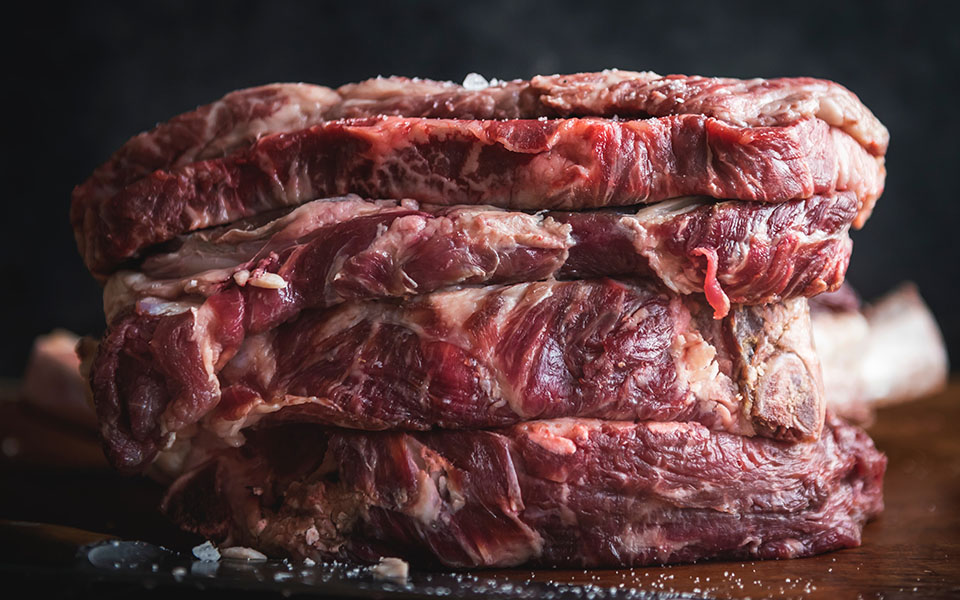Implementing an intervention process(s) to an establishment’s food safety system is not a new idea, but an approach that has been around for years. Considering today’s social media and mainstream broadcasting’s ability to blow these issues out of proportion, they often overshadow the industry in a cloud of negativity and loss of credibility.
Re-evaluating your food safety system to determine if an intervention can help minimize a food safety risk is critical and can help reduce the likelihood of being caught off guard by an unforeseen circumstance. Several intervention strategies have been developed over the years to help mitigate these risks, while new technologies and processes continue to develop and evolve.
Interventions in General
An intervention is defined as any chemical or physical process or technology that, when applied effectively reduces or eliminates pathogenic microorganisms from a product, process, or equipment surface (Nath, 2012). All interventions must have an approved Food Contact Notification (FCN) for each application and food product type, which are valid and recognized in all states within the U.S. Additionally, all guidance pertaining to the usage of any substance should be verified though FSIS-USDA Directive 7120.1 prior to implementation.
Employee Sanitation/GMP Practices
Let’s start with the basics and discuss interventions used by packing establishments. Sanitation practices are an important pre-requisite to assure that bacterial transfer is minimized. It is critical that sanitation programs address issues such as personnel hygiene and proper cleaning and sanitization procedures, as well as employee GMP practices. Knives, gloves and aprons are among a number of pieces of equipment as potential sources of bacteria if not cleaned and sanitized properly (Cliver, 2009). Assuring that proper sanitation practices are maintained and followed will help minimize these types of issues.
Post-Harvest Interventions
Post-harvest interventions can be used to reduce contamination during processing, including washing and spraying to remove any visible contamination. E. coli O157:H7 can be found on the hide and hooves, as well as in the intestinal tract, while Salmonella may be transferred and spread through improprer sanitation practices (improper knife sanitation). BioCide’s carcass treatment system along with RMC antimicrobial products EnviroGuard MP-2 15% (Maximum 400 PPM), Keeper Pro Acidified Chlorite (Maximum 1100 PPM), or HB3 Hypobromous Acid (Maximum 300 PPM) in conjunction with steam vacuuming work well together to help minimize these pathogens. All products have their designated FCN and are approved for their intended use by USDA.
Further Processing Interventions
Food safety risks associated with raw meat for further processing are still viable concerns due to the pre-existing nature of the raw material, additional handling, and the process (trimming, slicing/portioning, injecting, tenderizing, and grinding) to transition these items to the end user. The need for an intervention within any of these processes helps to minimize the risk as well as maintain the shelf life of the product as they are labeled and sold as raw, non-ready to eat. Products like RMC’s EnviroGuard MP-2 (Maximum 400 PPM) as well as Keeper Pro Acidified Chlorite (Maximum 1100 PPM) can be utilized in a variety of applications including sprays, dips, and direct injection via brine water to minimize risk of Salmonella and E coli 0157:H7.
For most ready to eat processors, a combination of interventions may be implemented, both directly to products and indirectly for controlling pathogens within the processing environment such as Listeria monocytogenes. RMC’s EnviroGuard MP-2 15% (Peracetic Acid) or Keeper Pro (Acidified Chlorite) can be used directly on product. For environmental control, Floorgard (quaternary ammonia compound) as well as F-29 Sanitizer for use in doorway foamers can be used with one another to minimize bacterial introduction through foot traffic into critical RTE areas. Additionally, compounds such as ozone can be used to rinse food contact surfaces, thereby reducing environmental pathogens and/or spoilage organisms.
Verification & Validation
To be effective, interventions must be verified and validated to ensure their intended use is appropriate for the process. Verification activities are important to assure the control measures are working as intended and they help to establish accuracy and validity. In other words, the controls are being properly implemented to control the hazard. Verification activities might include checking equipment calibration, or reviewing records to verify that the proper chemicals were added to obtain the correct concentration. Validation is the practice of proving and documenting that the process actually and consistently leads to the expected results; can the process, when implemented control the hazard? This may involve establishing scientific principles and data, seeking expert opinions, conducting in-process observations and tests, or perhaps conducting a challenge study, all to which help establish a scientific basis.
Conclusion
As food safety concerns are on the rise and continue to be hot topics of discussion within the general public, it is more critical than ever for the industry to utilize any and all intervention tools at their disposal to help minimize these issues. Considering that food manufacturing is growing aggressively, I predict these types of issues will be an on-going challenge without the proper systems in place. The risks and consequences far out weigh the capital investment necessary for proper implementation where one recall could tarnish the reputation of an establishment indefinitely. Be proactive, not reactive!
Works Cited
Carissa Nath, 2012- “Antimicrobial Interventions” Agricultural Research Utilization Institute
https://www.auri.org/assets/2012/09/Antimicrobial-Interventions_CNath.pdf
Dean Cliver, 2009- “Microbial Decontamination, Food Safety, and Antimicrobial Interventions” California Department of Food and Agriculture (CDFA)
https://www.cdfa.ca.gov/ahfss/animal_health/phr250/2007/25007antimic.pdf

